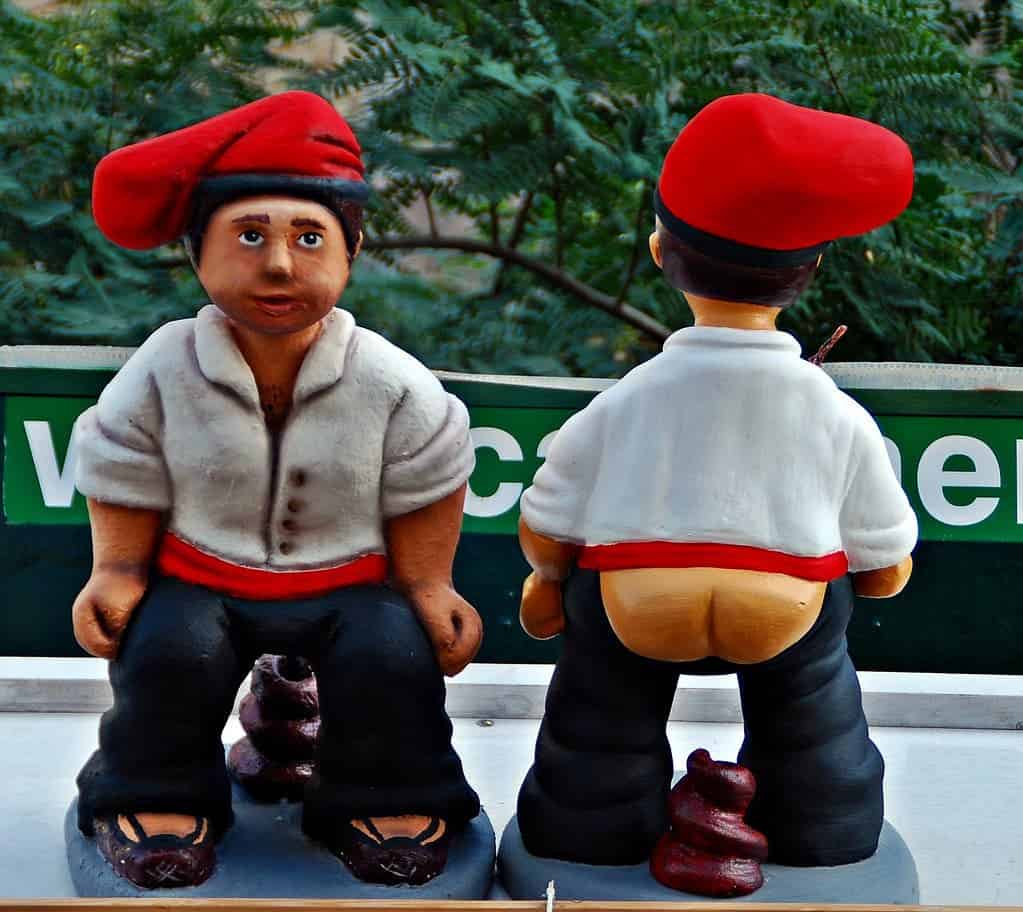We’re all familiar with the nativity scene: Mary, and her husband, Joseph, the infant Jesus, some shepherds, sheep, as well as some background elements. But in Barcelona and the rest of Catalonia, the scene features an unusual guest: El Caganer, who is unceremoniously going “number two” in the background.

El Caganer (literally “the Defecator”), has been a steadfast tradition for centuries — but its early history is shrouded in mystery. It’s unclear exactly what its origin is, but it seems to have entered the nativity at some point during the 17th or 18th century — during an artistic current called the Baroque. The Baroque followed the Renaissance style and used contrast, grandeur, and exuberant detail to inspire awe in the beholder.
However, during the Baroque period in the 17th century, some artworks also embraced exceptional realism, and many Baroque paintings and sculptures feature highly realistic scenes from day-to-day life. If you’re wondering what this has to do with our Caganer friend — what’s more natural than relieving yourself?
In their book El Caganer, authors Jordi Arruga and Josep Mañà explain:
“This was a time characterised by extreme realism… all of which relied heavily on descriptions of local life and customs. Here, working conditions and homelife were used as artistic themes.”
At the time, much like now, people used all sorts of materials and themes to decorate the nativity scene, as well as different types of figurines. At some point, El Caganer entered the scene: wearing a white shirt and a typical Catalan hat, barretina, he is usually in the background of the nativity scene — although he’s often found on his own as well nowadays
However, the reason why this particular figurine stuck and increased in popularity has to do with something different altogether: for centuries, the idea of defecating has been associated with good fortune and good health.
“Excrement equals fertilisation equals money equals luck and prosperity. Or so say the anthropologists,” said historian Enric Ucelay-Da Cal, emeritus professor at Barcelona’s Pompeu Fabra University. The local popular beliefs went so far as to say that houses without a Caganer would have bad luck.
According to the ethnographer Joan Amades, it was a:
“[..]customary figure in nativity scenes [pessebres] in the 19th century, because people believed that this deposit [symbolically] fertilized the ground of the nativity scenes, which became fertile and ensured the nativity scene for the following year, and with it, the health of body and peace of mind required to make the nativity scene, with the joy and happiness brought by Christmas near the hearth. Placing this figurine in the nativity scene brought good luck and joy and not doing so brought adversity.”
Walk around any Christmas market in Catalonia and you’ll find countless figurines, as well as many variations featuring famous people. An estimated 30,000 pieces are sold every year.
Ultimately, the inclusion of this figure in Nativity scenes is meant to be a humorous and irreverent addition to the traditional Nativity scene, a way to rehash an old tradition in a harmful and good-spirited way. So if you ever see a man doing this in a nativity scene, you’ll know where it’s from.






